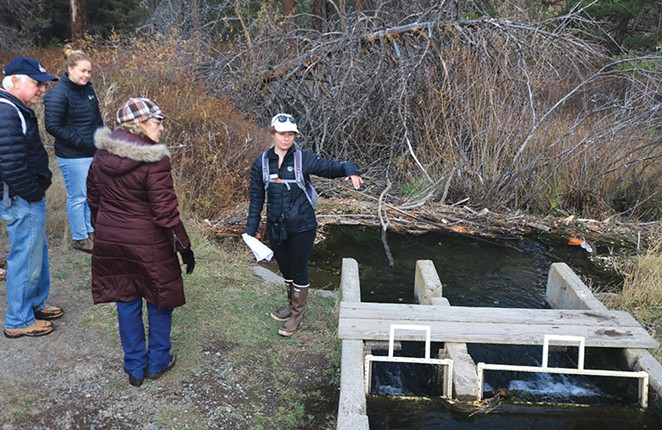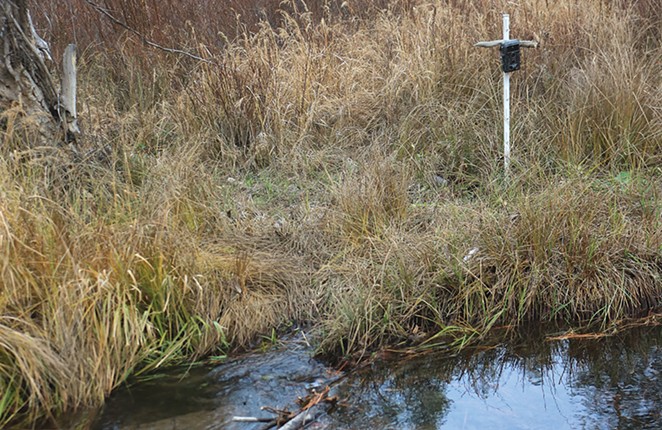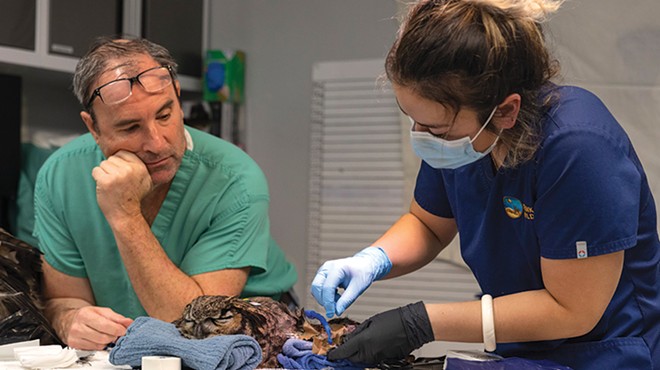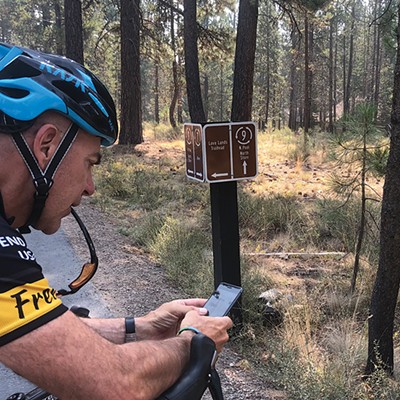On a recent field trip to Shevlin Park with Think Wild and Beaver Works Oregon staff, the group learned about the important role of one of nature's finest dam builders: the American beaver (Castor canadensis). But all has not been rosy for this keystone species.
Historical estimates put beaver populations in North America between 60 and 400 million individuals prior to European contact.

"Europeans have their own beaver (Castor fibre, or the European beaver) which they trapped to near extinction for hats," said Maureen Thompson, Beaver Works Oregon program manager. Top hats made from the soft under-fur of a beaver pelt were all the rage in European society in the 1700s up to the 1830s. After trapping out the European beaver, the expansion of European explorers in the New World was driven by trappers. "Before the Gold Rush, there was a Beaver Rush," said Thompson.
Two rival companies, the Hudson's Bay Company and the North West Company, were extremely active trapping beavers in the lands west of the Rocky Mountains. Displacing other smaller fur companies, the NWC merged with HBC in 1821 and adopted a "fur desert" policy to deplete fur-bearing mammals in the Snake River region, thus making the territory unattractive to American trappers and settlers. Peter Steen Ogden led many of those Snake River Country Expeditions across Idaho, Montana, Utah, Nevada, California and Oregon, severely decimating beaver populations across the region.
"The relationship between loss of riparian habitat and beaver range is iterative," said Thompson. "Since many riparian areas are impaired by anthropogenic stressors, they no longer support the conditions beaver need to survive, such as plants for food and building material."
Landscapes benefit by having beavers dam up small creeks and rivers, storing water which slowly soaks into the ground or spreads laterally, which creates wetlands and meadow-like habitat and helps sequester carbon from the atmosphere. The beaver ponds, which are also natural fire breaks, hold water which benefits fish, amphibians, aquatic invertebrates, and other species.
Utilizing the Oregon Department of Fish and Wildlife's Oregon Conservation Strategy as a guideline, Oregon Wild and Beaver Works Oregon determined how many of the state's strategic species would be affected by beavers. "Alijana Fisher at Oregon Wild determined 30-31% of species directly benefit from beaver modified landscapes and 12-14% benefit from beaver modified landscapes either indirectly or in parts of their range," said Thompson. Truly, a keystone species.
On our walk, Beaver Works volunteer Ann Jamison talked about her work monitoring trail cameras. "Glancing through the images on the camera screens in the field gets me charged up to see them on the computer screen," said Jamison. "I can see the detail and watch how the beavers, or other wildlife we catch on the cameras, behave or interact with one another or the environment they have worked so hard to create and is essential to their lives. It's fascinating!"
Ironically, this key riparian species found itself caught in a political net. Under Oregon law ORS 610, beavers, which are in the rodent family (Rodentia), were classified as "predatory." Guilt by scientific association with mice and rats for these herbivores, this classification allowed for unrestricted beaver removal and restricted the relocation of trapped animals.
To resurrect this issue, this summer the Oregon legislature passed HB 3464, the "Beaver Believer Bill" which removes the "predatory" status of beavers, allows ODFW to manage beavers on private land and promotes non-lethal management options. The bill influences coexistence over control and opens up options for enhancing riparian habitat throughout the "fur desert" to entice beavers to come back to their homelands.
Several organizations such as Beaver Works Oregon and ONDA are engaged in creating beaver habitat throughout the region, often working with private landowners.
"We are always looking for new volunteers to be a part of our Beaver Works Oregon program," said Sadie Pollock, education and volunteer manager. "A majority of the habitat restoration efforts happen in the fall and spring, but if folks are interested and want to be made aware of upcoming opportunities to get involved, I would highly encourage them to sign up to volunteer on our website, and subscribe to our volunteer calendar."
Maybe it's time to become a Beaver believer!
























